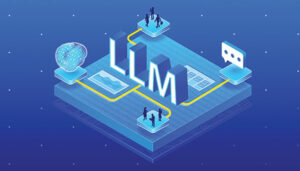Ben Rigby at Talkdesk explores ChatGPT, large language models, and generative AI.
What does this word soup mean for the contact centre?
ChatGPT has been in the press like an exploding ball of confetti. Tech companies talk about how it’s going to transform software.
Gaming companies predict that it will add a dynamic, human-like speaking capability to its characters. Teachers are trying to reimagine education now that plagiarism has become undetectable overnight.
Microsoft’s Bing suddenly seems like a contender to Google with its integrated ChatGPT functionality. And virtual agents for customer service and conversational analytics are about to take a huge leap forward.
The news cycle has been so fast, it’s been hard to keep up with all the terminology. Depending on which article you read, you might see the terms ChatGPT, GPT, GPT-3, GPT-4, large language models (LMM), or generative AI all used interchangeably.
And you wouldn’t be blamed for feeling confused about what means what or what does what. In this post, I’ll explain the terms with an eye toward the impact on the contact centre.
ChatGPT
ChatGPT is the term you’ll see most often used and misused. ChatGPT is a chat application that can hold a human-like conversation about almost any topic.
It was built by a for-profit startup called OpenAI, which has received a significant investment from Microsoft. It’s this application that has generated the flurry of press and excitement, for two reasons:
- It seems like magic.
- It’s accessible to everyone.
It seems like magic because it seems human. You ask a question about espresso and you get a conversational answer as if from a barista.
You ask a question about epilepsy and you get a conversational answer as if from a medical researcher. And when compared to many people’s experiences with chatbots that seem mostly to say, “Sorry, I didn’t understand that,” this experience does seem like alchemy.
Second, it’s accessible to everyday people. While this kind of capability may have been available to researchers and data scientists, ChatGPT is the first application that is available and understandable to the general public.
Whether you’re a 10-year-old kid doing homework (but not cheating!) or an engineer looking for coding advice, ChatGPT is accessible and easy to use.
As of February 2023, ChatGPT is not available for use in the contact centre (or by any other industry). It does not have an API—although there is a waitlist where OpenAI is collecting interest—and it can’t be used outside of the chat interface.
Incidentally, it’s also under high load and often unavailable (OpenAI has released a paid version that promises faster speeds and higher availability). But the sum of it is that ChatGPT is not something that a contact centre can readily use.
Large Language Models
So what are people talking about when they say that ChatGPT will transform the contact centre (or any other) industry?
They’re talking about the type of AI model that underpins ChatGPT. This type of model is called a large language model or LLM.
It’s large because it’s doing a massive number of calculations under the hood for every prediction that it makes.
The models are also trained on an equally massive amount of data, like almost all of the digitized written word, such as the whole internet. It’s a language model because its focus is predicting sequences of words.
What this means is that when given a prompt, the model can predict what comes next. So, if you were to give the prompt “Row row row your ____”, the model can predict that the next word is “boat.”
This latest crop of large language models can predict much more than one word, however. When given a prompt such as “The impact of IVRs on the quality of customer service has been…” a LLM can predict or complete a few paragraphs of very reasonable text describing the historical impact of IVRs in customer service.
For this reason, these models are also referred to as text completion models. Given all of the data that the model has “read” previously, it can complete the next logical sentence, paragraph, or essay with a human-like quality.
LLMs do not work with images, they don’t do statistical analysis, they don’t do calculations, and they don’t fact check.
They just operate in the domain of language—the written word. For any industry that deals primarily with language—like the contact centre—just focusing on language is a lot!
The contact centre helps people resolve issues via spoken or typed language. Language is at the core of what the contact centre does and it’s why the impact of LLMs on customer service is so profound.
GPT
We all know what chat means. But what is GPT? GPT stands for Generative Pre-trained Transformer. It describes a family of LLMs that have been built in a particular way (LLMs can be built in a variety of ways).
At the moment, ChatGPT utilizes an undisclosed version of GPT created by OpenAI, which has been further tuned to perform well in chat-like conversations.
There are many other types of LLMs. And yes, there is a GPT-1, a GPT-2, and there will be a GPT-4 soon. Each generation of these models has an increasing number of “parameters,” which you can think of like neurons in the brain.
GPT-1 has 117 million parameters, GPT-3 has 175 billion parameters, and GPT-4 will have many more parameters.
To date, adding more parameters has resulted in more capable models. If you’ve played with ChatGPT, using GPT-3 under the hood, you know that the text completions are very good.
In particular, it was the latest iteration of GPT models, referred to as GPT 3.5 DaVinci that crossed the chasm from interesting to amazing; however, if you were to play with GPT-1, you wouldn’t be nearly as impressed.
While ChatGPT is not available outside of the chat interface on OpenAI’s website, many of these GPT models are available from OpenAI via paid APIs. Because of its cozy relationship with Microsoft, these APIs are also available for paid use via Microsoft Azure.
This fact is significant for contact centres, because Azure adds the kinds of security, reliability, compliance, and data privacy factors that contact centres require.
However, there are many other GPT and LLM models available from other vendors, also on an open-source basis. Google, for example, introduced its LLM, called Bard, and announced a $300m investment in Anthropic—a startup that builds LLMs. Another popular open-source LLM is called Bloom.
In short, there are a wide variety of options for building software with LLMs. OpenAI is not the only game in town.
Generative AI
That brings us to our final term, generative AI. Generative AI is an umbrella term, which refers to any of the AI models that generate a novel output based on an input, often called a prompt. This broader term encompasses models that produce language, visual imagery, and audio.
You may have heard about Dall-e, another product of OpenAI, which can produce beautiful images when given a prompt. Or Jukebox that generates music as raw audio.
These generative AI models don’t necessarily use LLMs, but some do incorporate LLMs in an effort to understand the meaning of a prompt.
For the contact centre, audio and visual models are less interesting at the moment. Although models that produce audio outputs will surely hit their stride in the next several years, which will have a transformative impact on voice conversation.
Voice generation models take a small sample of recorded voice conversation and create a simulated voice that can be used by software systems programmatically.
While ChatGPT is the term that has dominated the news, it’s been used along with these other terms in a confusing word soup. Hopefully, it’s all making more sense.
The important takeaway for anyone who works in the contact centre is that LLMs have become very good at predicting words, sentences, and paragraphs.
And since much of what we do in the contact center is to give reasonable language-based responses to customers, the impact is profound. It means that automated systems have achieved a quality that is comparable to a human in many cases.
This blog post has been re-published by kind permission of Talkdesk – View the Original Article
For more information about Talkdesk - visit the Talkdesk Website
Author: Talkdesk
Published On: 24th Feb 2023 - Last modified: 26th Feb 2025
Read more about - Expert Insights, Artificial Intelligence, Ben Rigby, ChatGPT, Talkdesk






 Talkdesk is a global customer experience leader for customer-obsessed companies. Our contact center solution provides a better way for businesses and customers to engage with one another.
Talkdesk is a global customer experience leader for customer-obsessed companies. Our contact center solution provides a better way for businesses and customers to engage with one another. 
































